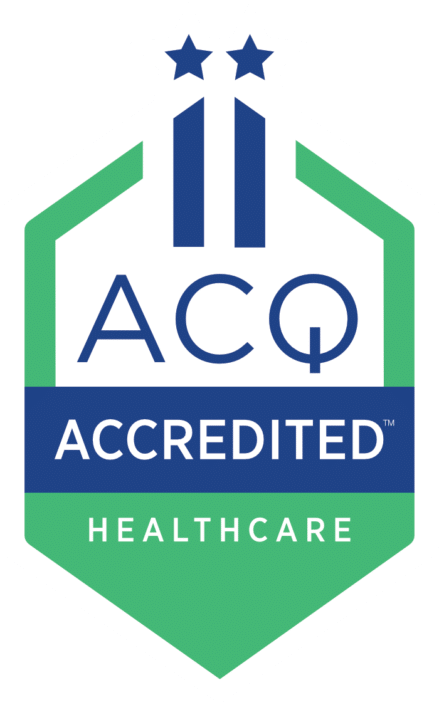Caregiver Training for ABA & Why It’s Important
Applied Behavior Analysis (ABA) therapy for autistic learners uses structured techniques to teach skills, manage behaviors, and promote independence through positive reinforcement. Incorporating caregivers in an individual’s treatment plan is profoundly beneficial for the learners and their caregivers. It ensures consistency across environments, accelerates progress toward goals, and empowers caregivers to reinforce desired behaviors, leading to more effective, long-term outcomes.
In this article, we’ll dig deeper into the benefits of caregiver involvement, discuss the roles and functions of a caregiver in a learner’s ABA therapy journey, explore the goals of ABA caregiver training, and explain the Balance Program at A Bridge to Achievement (ABtA).

The Benefits of Caregiver Involvement in ABA Therapy
Establishing a collaborative partnership between clinician and caregiver isn’t just a helpful addition to ABA therapy – it’s a cornerstone of effective treatment for learners with autism!
Consistency Across Environments
ABA strategies, like positive reinforcement or behavior replacement, work best when applied consistently. Caregivers extend the reach of therapy by implementing the same strategies at home, during outings, or at school, ensuring learners encounter consistent responses across all settings. This seamless extension of therapy into “real life,” shifting strategies from a closed environment into a general environment, is aptly called generalization.
Improved Skill Retention
New behaviors need repetition to become habitual. When caregivers practice learned skills outside therapy, learners get more exposure, which strengthens retention and helps behaviors stick, making progress sustainable over time.
Enhanced Communication
Caregivers know their learner’s habits, triggers, and preferences better than anyone. This information is invaluable to therapists, allowing them to design interventions that fit smoothly into the learner’s lifestyle and boost the effectiveness of treatment.
Stronger Relationships & Trust
When caregivers actively engage in therapy, the learner senses that everyone is working toward the same goal, which fosters a sense of safety and motivation. This unity between caregiver, learner, and therapist can help accelerate progress.
Faster Progress Toward Goals
Goals like improving communication, social skills, or self-regulation need frequent reinforcement. Caregivers’ involvement multiplies learning opportunities, allowing learners to achieve these goals faster than with therapy sessions alone.
Reduction in Challenging Behaviors
Challenging behaviors often arise at unpredictable times. Trained caregivers can respond in the moment with techniques like redirection or positive reinforcement, reducing the frequency and intensity of problem behaviors in everyday life.
Empowerment of Caregivers
ABA equips caregivers with practical tools to manage daily challenges, such as tantrums or difficulties with transitions. This empowerment not only enhances their ability to support their learner but also reduces stress and fosters confidence in their parenting.
Long-Term Success Beyond Therapy
ABA therapy is not just about short-term change; it aims to equip learners with lifelong skills. When caregivers understand and apply the principles of ABA, they can continue supporting the learner’s growth even after formal therapy ends, ensuring progress continues into the next chapter.
The Role of Caregiver Involvement in ABA Therapy
Caregivers play a critical role as members of a learner’s therapy support team: implementation partner, observer and reporter, behavioral modeler, skill reinforcer, and collaborator. These functions present differently as the learner grows and matures.
Implementation Partner
As implementation partners, caregivers apply ABA strategies across everyday routines to ensure consistency in learning. For preschoolers, this involves integrating play and managing transitions. Caregivers of school-aged children focus on fostering emotional regulation, encouraging social interactions, and supporting participation in activities. For teens, the emphasis shifts to promoting independence through goal setting, healthy habits, and time management. With young adults, caregivers support independent living by practicing life skills like budgeting, cooking, and applying for jobs.
Observer & Reporter
Caregivers who fulfill the role of observer and reporter monitor the learner’s progress, behaviors, and challenges, sharing insights with the therapy team. They track preschoolers’ developmental milestones like language and motor skills. For school-aged learners, caregivers focus on emotional growth, peer dynamics, and behavioral patterns. With teens, they watch for social challenges and emotional shifts linked to autonomy and friendships. For young adults, caregivers monitor how they manage work, relationships, and independent living, reporting any concerns to therapists and support networks for timely intervention.
Behavioral Modeler
For preschoolers, behavioral modelers focus on basic communication, sharing, and turn-taking during play. For school-aged learners, they exemplify problem-solving and emotional regulation techniques and, with teens, focus on modeling healthy relationships, stress management, and independent decision-making. Caregivers take on more of a mentor role when behavior modeling for young adult learners, demonstrating professional behavior, time management, and interpersonal skills essential for adulthood.
Skill Reinforcer
Caregivers fulfilling the role of skill reinforcer provide positive reinforcement to strengthen learned behaviors. They use small rewards like stickers or praise to encourage communication and following instructions among preschoolers, and more structured rewards, such as extra screen time, for meeting responsibilities for school-aged learners. With teens, caregivers support autonomy by rewarding self-directed actions like completing chores. For young adults, they reinforce complex skills, such as budgeting or job performance, through natural rewards like trust, recognition, and privileges.
Collaborator
As collaborators, caregivers work with ABA professionals to set meaningful goals that align with the family’s values and needs. For preschoolers, they help create developmental goals that fit into daily routines. With school-aged learners, they develop strategies to manage emotions, social interactions, and interests. For teens, caregivers collaborate on personal goals promoting independence and future aspirations. For young adults, they partner with therapists to focus on long-term outcomes, such as employment and independent living skills.

A Bridge to Achievement ABA Caregiver Training
At A Bridge to Achievement (ABtA), we pride ourselves on providing family-centered programming, which includes parent ABA services. Just like each learner’s therapeutic treatment plan, the goals of our ABA caregiver training are highly individualized. The ultimate aim is to empower the transfer of skills learned in therapy to the home environment and beyond. Support and guidance can be extended to all individuals involved with the learner’s progress: parents, grandparents, siblings, teachers, other service providers, etc.
- Knowledge Transfer
We teach caregivers the principles and techniques of ABA to ensure they can effectively apply them at home and in the community. - Skill Generalization
We equip caregivers to help learners generalize behaviors across various settings and situations. - Behavior Management
We provide strategies for reducing challenging behaviors and promoting positive ones. - Empowerment & Confidence
We foster caregivers’ confidence in supporting their learner’s development independently. - Collaboration & Consistency
Our therapists work in sync with caregivers to develop goals and maintain consistency in treatment, enhancing long-term success.
Caregiver Training: ABA Balance Program
The Balance Program at ABtA is a caregiver-led program and telehealth initiative that is specifically designed for caregivers needing help finding balance as they support and manage someone with Autism Spectrum Disorder (ASD). Meetings are regular, brief, and targeted so caregivers can grow to understand how to use ABA principles to create a more stable and joyful home environment for all.
Interested in learning more about the Balance Program or other ABA therapy programs at A Bridge to Achievement, or requesting services for your learner? We’re just a click or call away! Support starts here.






